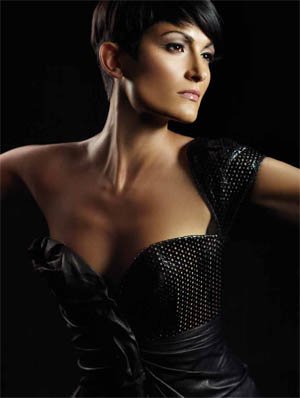articles/Portraiture/turningmediumformat-page2
Turning Medium-format - Jerry Ghionis - part 2 of 1 2 3
by Jerry Ghionis Published 01/10/2009

The new Phase One P 40+ (with Sensor+ technology) features a 40-megapixel sensor with 6 micron pixels, producing a 7320x5484 pixel image with a 4:3 ratio format. This is nearly twice the resolution of Jerry's existing DSLR camera. 'And there was something else about the image quality that I loved. It wasn't just the clarity and the fine detail, it was the way the digital back records highlights and shadows - the dynamic range. Working for years with DSLR cameras, I guess I just accepted the image quality as being the best that was possible, but now looking at a medium-format file, I have reassessed what quality is all about. It is simply amazing!'
Jerry is referring to medium-format digital photography's most powerful advantage: a huge dynamic range. The P 40+ has a 12.5 f-stop range, once again almost twice what is provided by a DSLR camera, enabling images to record and retain detail in both highlights and shadows in a single exposure. For a wedding photographer shooting brides with white dresses and grooms with black suits, medium-format digital quality is the ultimate solution. Clients spend a lot of money on the dress and suit, so it's imperative that all the photographs show the finest detail.
Shooting weddings is perhaps the most demanding of all photographic disciplines. Working in a range of different locations, often in the late afternoon and early evening, Jerry is constantly working in low light. In fact, he looks for and creates mood and atmosphere with available light and one or two of his signature light sources.
Until the Phase One P 40+ arrived, Jerry says medium-format wasn't an option for him because he couldn't shoot at over ISO 800. Now with the press of a button, the P 40+ with Sensor + technology can have Jerry shooting at up to ISO 3200.
Sensor+ technology, developed by Phase One, uses a process of 'pixel binning' to provide higher ISO settings. With the Sensor+ feature activated, the P 40+ back combines the data from four pixels into one piece of data, providing a four times increase in sensitivity. And while the size of the resulting file changes from 40 to 10-megapixels, it does so without changing the size of the capture area so the focal length remains the same.
Years ago when I was shooting with a Mamiya RB67, I basically used ISO 400 film and that was it! However, today it's a different world and shooting at higher ISO settings is a necessity, especially for the type of photography I do.
'I love shooting with candle light and video lights and I need to shoot hand-held in dark churches. The choice used to be flash or a tripod, but neither suits the style of photography I produce, so having a high ISO setting on a medium-format digital camera is simply priceless.'
Even more importantly, Jerry explains, when you capture images in low light, it's all the subtleties in the shadow areas that make the difference. 'Think about a bride and groom walking proudly down the aisle as they leave the church and your photograph not only renders the folds of the dress and texture of the suit, but there's fine detail in the ceilings and stained glass windows in the church as well. How amazing is it to have a 12.5 stop dynamic range!'
Please Note:
There is more than one page for this Article.
You are currently on page 2
- Turning Medium-format - Jerry Ghionis page 1
- Turning Medium-format - Jerry Ghionis page 2
- Turning Medium-format - Jerry Ghionis page 3
1st Published 01/10/2009
last update 09/12/2022 15:00:01
More Portraiture Articles
There are 26 days to get ready for The Society of Photographers Convention and Trade Show at The Novotel London West, Hammersmith ...
which starts on Wednesday 14th January 2026





